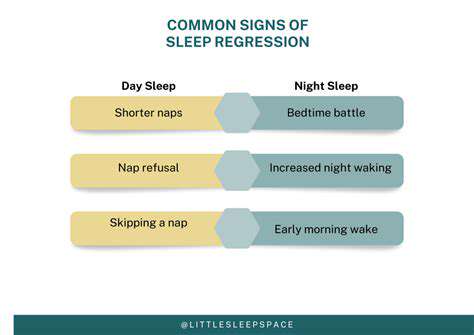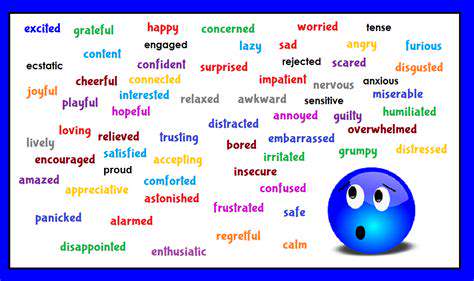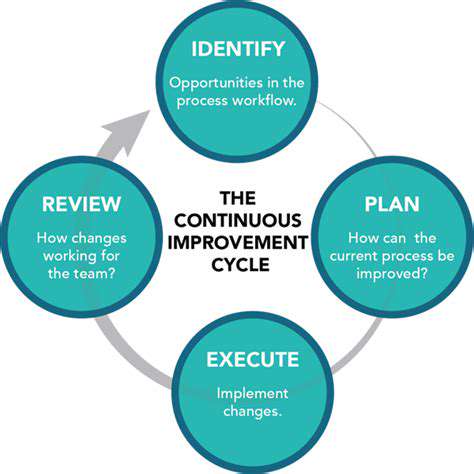Sleep Regressions Explained: Navigating Changes in Sleep Patterns
Developmental Milestones
Sleep regressions often coincide with significant developmental leaps in a child's life. These milestones, such as learning to crawl, walk, or talk, require substantial mental and physical energy. The increased brain activity and physical exertion can disrupt a child's established sleep patterns, leading to nighttime awakenings and increased fussiness. This is a natural part of growth and development, and understanding this connection can help parents adjust their expectations and approach.
Furthermore, the brain's development during these periods often includes the consolidation of new skills and memories, which can be demanding. These processes can lead to disruptions in the sleep cycle, as the body and brain work hard to process and store new information. Parents should be aware of these potential correlations to better understand and support their child's needs.
Environmental Changes
Changes in a child's environment, even seemingly minor ones, can trigger sleep regressions. A new crib, moving to a new home, a change in daycare, or even just a new playmate can disrupt a child's sense of security and routine. These disruptions can make it harder for them to settle into a restful sleep cycle. The familiar comfort of their established environment is crucial for a consistent sleep pattern, and any change can temporarily throw things off balance.
Similarly, shifts in temperature or noise levels in the child's bedroom can also impact their sleep quality. A sudden increase in noise or a change in temperature can disrupt a child's sleep and lead to more frequent awakenings. Creating a consistent and predictable sleep environment is vital for minimizing disruptions.
Dietary Changes
Dietary changes, both in terms of quantity and quality, can significantly impact a child's sleep. A sudden increase or decrease in food intake can lead to discomfort and digestive issues, which can interfere with sleep. Also, the timing of meals and snacks in relation to bedtime can influence sleep quality. A heavy meal too close to bedtime can cause indigestion and restlessness, making it harder for a child to fall asleep and stay asleep.
Stress and Anxiety
Stress and anxiety, whether related to a specific event or more general feelings of insecurity, can lead to sleep regressions. A child experiencing stress, such as separation anxiety or fear of the dark, may have difficulty settling down and falling asleep. The underlying anxiety can manifest as increased nighttime awakenings and a general reluctance to sleep. Recognizing these emotional factors is critical for providing appropriate support and ensuring a healthy sleep environment.
Illness and Physical Discomfort
Illness or physical discomfort, regardless of its severity, can disrupt a child's sleep. A simple cold or earache can cause pain and discomfort, leading to restlessness and difficulty sleeping. This includes teething discomfort which is a common cause of sleep disruption in infants. Understanding that illness can disrupt sleep patterns is essential for offering the necessary support and care.
Furthermore, various physical discomforts, such as allergies or skin irritations, can also contribute to sleep regressions. Addressing the underlying cause is key to restoring healthy sleep habits.
Recognizing the Signs of a Sleep Regression:

Recognizing Physical Signs
Physical signs of sleep deprivation can manifest in various ways, including a persistent feeling of fatigue and drowsiness throughout the day. This constant tiredness can significantly impact daily activities, making it challenging to concentrate and perform at optimal levels. Individuals experiencing sleep deprivation may also notice changes in their appetite, with cravings for sugary or high-fat foods, and a general decrease in their energy levels.
Another physical sign is an increased susceptibility to illness. A lack of sufficient sleep weakens the immune system, leaving the body more vulnerable to infections. This can manifest in frequent colds, flu-like symptoms, or other illnesses.
Recognizing Cognitive Signs
Cognitive signs of sleep deprivation are often subtle but can significantly impact overall performance. Poor concentration and difficulty focusing on tasks are common symptoms. This lack of focus can lead to errors in judgment and decision-making, potentially impacting work, school, or personal relationships.
Memory problems are another significant cognitive sign. Sleep deprivation can impair the brain's ability to consolidate memories, making it harder to recall information and learn new things. This can have long-term consequences, affecting academic performance, work productivity, and personal relationships.
Recognizing Emotional Signs
Sleep deprivation can have a noticeable impact on emotional well-being. Individuals experiencing chronic sleep loss may experience increased irritability and mood swings. These emotional fluctuations can be unpredictable and challenging to manage, leading to strained relationships and difficulties in social interactions.
Anxiety and depression are also potential emotional consequences of sleep deprivation. A lack of sleep can disrupt the delicate balance of neurochemicals in the brain, increasing the risk of developing or exacerbating existing mental health conditions. This can lead to feelings of sadness, hopelessness, and an overall sense of emotional distress.
Recognizing Behavioral Signs
Behavioral changes are often overlooked but are crucial indicators of sleep deprivation. Individuals experiencing sleep loss may exhibit increased clumsiness and difficulty with coordination. This can manifest in accidents, injuries, and a general sense of being off-balance in their daily activities. These difficulties can impact both physical and mental well-being, creating a cycle of worsening symptoms.
Recognizing Social Signs
Sleep deprivation can also impact social interactions. Individuals experiencing sleep loss may become withdrawn, isolating themselves from social activities. This can lead to strained relationships and a sense of loneliness, further exacerbating the issue. Lack of sleep can negatively impact social interactions, making it harder to maintain positive relationships and engage in social activities.
Recognizing Workplace Implications
Sleep deprivation has significant implications for workplace productivity and safety. Employees experiencing sleep loss often experience decreased alertness, impaired judgment, and difficulty concentrating on tasks. This can lead to errors, accidents, and reduced overall productivity. This can affect the entire workplace environment, impacting the efficiency and safety of operations.
Furthermore, chronic sleep deprivation can lead to absenteeism and presenteeism, where employees are physically present but not fully engaged or productive. This has serious financial and operational implications for businesses.












